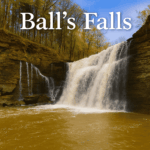Explore the fascinating layers of rock exposed along the Niagara Gorge in Ontario, Canada, where age dating reveals millions of years of Earth’s history. By examining these formations, visitors and researchers can accurately determine the chronological sequences that shaped this iconic landscape.
Understanding the age of rock layers in the gorge provides insights into past geological events, such as glacial movements and volcanic activity, which occurred during different periods. The diverse stratigraphy showcases a timeline spanning Devonian, Silurian, and Precambrian eras, offering a detailed glimpse into Earth’s ancient past.
To fully appreciate the significance of these formations, consider taking guided tours that highlight specific strata and their relative ages. Opt for local experts who can interpret radiometric dating methods and fossil evidence to deepen your comprehension of the region’s geological timeline.
By analyzing the exposed layers, you can trace how natural forces over millions of years created the scenic wonder of Niagara Gorge, linking geological history directly to the captivating landscape seen today.
Determining Rock Layer Ages Through Fossil and Mineral Dating Techniques
Start with radiometric dating on mineral samples from rock layers near Niagara Gorge, Ontario, Canada, to establish precise ages. Techniques like uranium-lead dating on zircon crystals provide reliable results for ancient formations, often exceeding hundreds of millions of years.
Use fossil analysis to identify index fossils within specific strata. Fossilized marine invertebrates found in the Gorge help correlate layers to established geological periods, giving context to their age. Accurate fossil identification refines the timeline and confirms mineral dating results.
Apply stratigraphic correlation by comparing fossil assemblages and mineral ages across different sections of the Gorge. This method pinpoints the relative timing of layers and highlights changes in environmental conditions through time.
Integrate data from multiple dating techniques to solidify age estimates. For instance, combining uranium-lead dating with paleontological evidence from fossils enhances confidence in the chronological framework of the rock layers exposed along Niagara Gorge.
Regularly validate results by cross-referencing findings with established geological maps of Ontario and Canada. Such comparisons ensure that the age determinations align with regional geological histories and contribute to a comprehensive understanding of the area’s ancient past.
Interpreting Geological Events by Studying Unconformities and Layer Discontinuities
Focus on identifying unconformities in rock layers around Ontario, particularly near Niagara and Balls Falls. These gaps reveal periods of erosion or non-deposition, which help pinpoint significant shifts in geological history. Look for flat-lying boundaries or angular discordances that distinguish different sedimentation phases.
Examine the characteristics of unconformities to determine their origin. For example, a non-conformity indicates a surface of erosion separating older crystalline rocks from overlying sedimentary layers. An angular unconformity suggests tilting or folding before erosion paused, followed by new sediment deposition on an angled surface.
Document layer discontinuities meticulously by noting changes in grain size, fossil content, or mineral composition. These differences often mark the boundary between distinct geological periods or events, such as volcanic eruptions or glacial advances, which are crucial for constructing the regional timeline.
Use the boundaries observed at Balls Falls to correlate local unconformities with those across Ontario. This approach can help establish a broader picture of the timing and sequence of geological events, especially in areas where older layers are missing or truncated due to past erosion.
Compare the fossil records within different layers to refine age estimates. For instance, the presence or absence of particular fossil types can indicate specific periods of deposition or interruption, providing clues about environmental or climate changes at the time.
Apply these insights to interpret how geological events shaped the current landscape. Recognize that unconformities often mark transitions such as the onset of glaciation, mountain building phases, or tectonic shifts. In Niagara and the surrounding areas, these features record dynamic processes that have sculpted the region over millions of years.
By carefully studying unconformities and layer discontinuities, you can piece together a detailed sequence of geological events. This method uncovers the history hidden within the rock layers and enhances understanding of the area’s complex geologic past.
Using Stratigraphic Correlation to Establish the Chronology of Exposed Rock Layers
Begin by identifying key marker beds within the gorge near Niagara, Ontario, Canada. These distinctive strata contain volcanic ash layers or fossil assemblages that serve as chronological anchors. Use regional stratigraphic charts to compare these markers with similar layers elsewhere in Ontario, linking the local chronologies to broader geological frameworks.
Analyze sedimentary structures, fossil content, and lithological features across different sections of the exposed strata. Pay attention to the presence of index fossils characteristic of specific geological periods, such as trilobites or brachiopods, which can help establish relative ages. Synchronize these findings with well-dated stratigraphic sequences from adjacent regions to refine the age model.
Employing Additional Dating Techniques
Complement stratigraphic correlation with radiometric dating methods, such as U-Pb or K-Ar dating on volcanic ash layers, to obtain absolute ages. Cross-reference these dates with the stratigraphic framework to enhance chronological accuracy. Comparing the Niagara gorge sequence with known global events, like major volcanic eruptions or mass extinctions, further contextualizes the timeline of exposed rock layers.
By integrating local stratigraphic data from the Niagara area with regional and international correlations, geologists can confidently establish a detailed chronological sequence of the rock layers exposed in the Niagara Gorge. This approach ensures a comprehensive understanding of the geological history recorded in this prominent site in Ontario, Canada.

